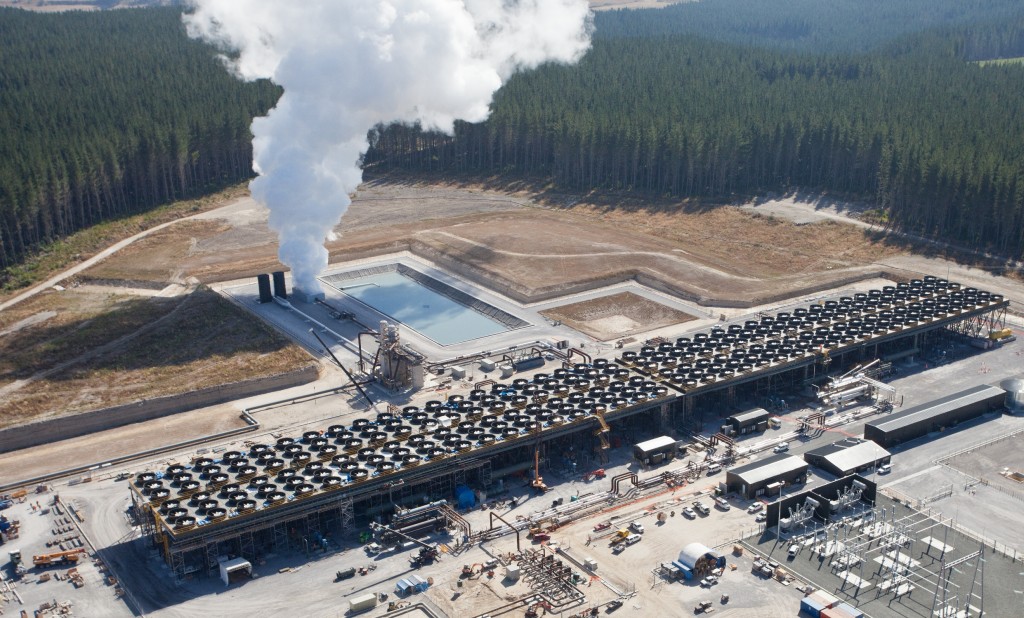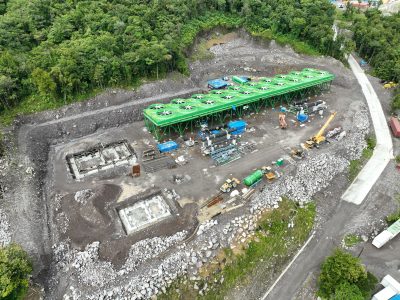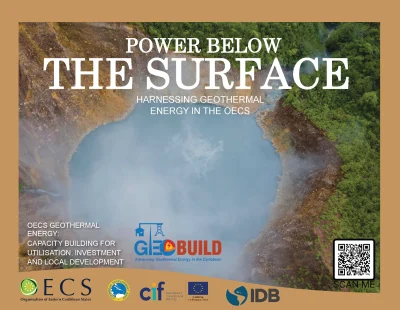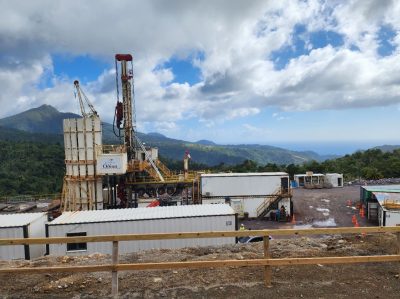How have regulations/ incentive schemes driven geothermal development?
Policies, regulations and incentives play an important role in helping to foster geothermal development. How crucial they really have been in the past 14 years was content of a recent presentation I gave and talk about in this article.
The topic on how government intervention and support can help drive an industry is surrounded by quite opposite opinions. While the debate could take some spin towards the general role of government in private business activities, I just want to focus on the role of regulations and incentive schemes in driving geothermal development.
Having been working in the geothermal energy industry for now about 8 years and following the industry closely through my work with ThinkGeoEnergy, the general theme is that geothermal energy development represents large risk elements, mainly in the form of exploration risk – the risk to find a resource that can be utilised for either power generation or direct heat use.
Therefore much of the efforts made by industry and demands circle around mitigating that exploration or drilling risk. But is this the key element that makes geothermal development happen and successful?
At the recently held GeoPower Global Markets conference in Turkey (December 2014), I was asked to hold a presentation on the “Impact of different regulatory/ incentive schemes to foster [geothermal] development”.
In preparing for the presentation, I tried to look at the set theme from a slightly different angle. Incentives and regulations are rather different elements in how to foster an industry.
By definition, regulations are “a rule or directive made and maintained by an authority”, which in the context of supporting an industry essentially represents ways to make things easier and remove obstacles for an industry.
Incentives on the other hand are ways that either “incite or tend to incite to action or greater effort”. So they directly impact decisions by businesses to be active or not in a certain industry.
Which of these efforts is the more crucial element in geothermal development is the big question.
In the ESMAP Geothermal Handbook of 2014, the authors looked at what are key elements to successful geothermal development. They talk about availability of accurate resource data and other relevant information, effective and dedicated institutions, supportive policies and regulations; and access to suitable financing for developers.
Looking at these four key elements, I could not help but to actually summarise this in – from my perspective – the two key points: Supportive policies (which help foster effectiveness in institutions and data availability) and Finance.
Without either one, geothermal development is not happening, as they essentially provide “enabling framework settings”.
In my presentation I then looked at geothermal development in the past 14 years and looked at what were the key drivers for development in these countries.
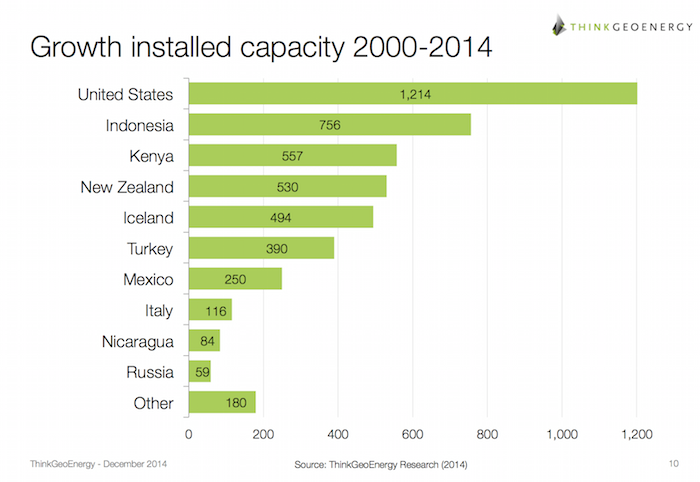
The main take away for most of these countries was that the primary driver was energy demand and energy security, as well as the price of power achieved. Certain other elements might have played a somewhat bigger role in enabling development in specific countries, but at the end demand and power prices were the key drivers for all.
This naturally is paired with an availability of financing, but if the right power purchase price is there, financing seems to have been available for the countries that have lead development at least the past 14 years in the geothermal industry.
So lets look at some of the different countries specifically for the period of 2000 to 2014, not looking at issues looking forward for the years to come.
The United States have seen the largest growth over the period. The key drivers for that development have been policies that created a demand for utilities sourcing renewable energy. The portfolio standards force utilities to buy a certain percentage of their power from renewable energy sources, such as geothermal. Due to the nature of geothermal, it therefore was able to gain a comparably good power purchase price, which in the end helped drive development. Another element that has helped the geothermal industry in the U.S. was a financial incentive in the form of Production Tax Credits. They allow investors to receive tax credits on profits earned if they invest in geothermal projects. This has worked well in years of economic growth and companies looking at ways to utilise tax credits on profits. There have though been other elements such as Loan Guarantees, Stimulus funding and Investment Tax Credits but essentially the main drivers have been the Portfolio Standards and the Production Tax Credits (PTC)
In Indonesia, there have been lots of discussions over the years about a challenging regulatory framework hindering development. But still the country has seen some geothermal growth. This is mainly due to the rather tremendous and growing energy demand. So despite regulatory challenges, just demand has been sufficient (but clearly not sufficiently enough) to foster some development.
In Kenya the picture looks different. Here economic growth and energy demand have also been key drivers, but this is paired with strong political will and strong foreign funding. Risk mitigation will likely play a bigger role in the coming years, but for the period looked at it was not the key driver.
In my presentation I combined New Zealand and Iceland. In both countries there has been political will and the right regulatory framework to enable geothermal development, this was paired with energy demand (through large scale industrial power offtakers), but also some risk mitigation elements.
In Turkey, one of the key new comers, the main driver for development has been an ever growing energy demand and a favourable feed-in-tariff system that has provided a sufficient financial incentive for investors to enter the market. This paired with regulation and a tender system fostered development and helped the country make that huge leap forward in the national rankings.
So back to the question if regulations and incentives actually are drivers in fostering an industry. My conclusion – here for the Geothermal Industry – is that regulations and policies set the theme and incentives can somewhat help, but the main key element is demand and competitiveness as is clearly shown in the U.S. Any policies that are based purely on the fact that geothermal energy is a renewable energy source are not sustainable in the long term. Demand and availability of financing are the key elements.
A shorter and more general version of this article has been posted on LinkedIn.
